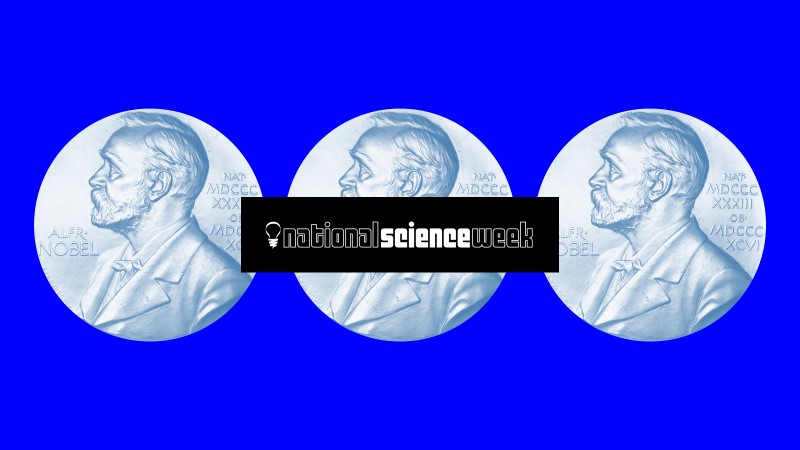The annual Ig Nobel Prize ceremonies were begun in 1991 by the Annals of Improbable Research in an effort to “celebrate the unusual, honour the imaginative — and spur people’s interest in science, medicine, and technology.” Each year ten prizes are awarded based on the ability of a study to ‘first make people laugh, and then make them think.’ Winners from all around the globe travel at their own expense to give a one-minute speech about their work, and Prizes are presented by real Nobel Laureates at a gala in the Sanders Theatre of Harvard University (Massachusetts USA).
Here’s a summary of last year’s winners:
PHYSICS PRIZE
“Can a cat be both a solid and a liquid?”
[France, Singapore, USA]
Researchers: Marc-Antoine Fardin
Reference: “On the Rheology of Cats,” Marc-Antoine Fardin, Rheology Bulletin, vol. 83, 2, July 2014, pp. 16-17 and 30.
PEACE PRIZE
“Didgeridoo playing is an effective treatment for obstructive sleep apnoea and snoring”
[Switzerland, Canada, The Netherlands, USA]
Researchers: Milo Puhan, Alex Suarez, Christian Lo Cascio, Alfred Zahn, Markus Heitz, and Otto Braendli
Reference: “Didgeridoo Playing as Alternative Treatment for Obstructive Sleep Apnoea Syndrome: Randomised Controlled Trial,” Milo A. Puhan, Alex Suarez, Christian Lo Cascio, Alfred Zahn, Markus Heitz and Otto Braendli, BMJ, vol. 332 December 2006.
ECONOMICS PRIZE
“for experiments to see how contact with a live crocodile affects a person’s willingness to gamble”
[Australia, USA]
Researchers: Matthew Rockloff and Nancy Greer
Reference: “Never Smile at a Crocodile: Betting on Electronic Gaming Machines is Intensified by Reptile-Induced Arousal,” Matthew J. Rockloff and Nancy Greer, Journal of Gambling Studies, vol. 26, no. 4, December 2010, pp. 571-81.
ANATOMY PRIZE
“Why do old men have big ears?”
[UK]
Researchers: James Heathcote
Reference: “Why Do Old Men Have Big Ears?” James A. Heathcote, British Medical Journal, vol. 311, 1995, p. 1668.
BIOLOGY PRIZE
“for the discovery for a female penis and a male vagina in a cave insect”
[Japan, Brazil, Switzerland]
Researchers: Kazunori Yoshizawa, Rodrigo Ferreira, Yoshitaka Kamimura, and Charles Lienhard
Reference: “Female Penis, Male Vagina and Their Correlated Evolution in a Cave Insect,” Kazunori Yoshizawa, Rodrigo L. Ferreira, Yoshitaka Kamimura, Charles Lienhard, Current Biology, vol. 24, no. 9, 2014, pp. 1006-1010.
FLUID DYNAMICS PRIZE
[South Korea, USA]
“for studying the dynamics of liquid-sloshing when a person walks backwards carrying a cup of coffee”
Researchers: Jiwon Han
Reference: “A Study on the Coffee Spilling Phenomena in the Low Impulse Regime,” Jiwon Han, Achievements in the Life Sciences, vol. 10, no. 1, 2016, pp. 87-101.
NUTRITION PRIZE
[Brazil, Canada, Spain]
“for the first scientific report of human blood in the diet of the hairy-legged vampire bat”
Researchers: Fernanda Ito, Enrico Bernard, and Rodrigo Torres
Reference: “What is for Dinner? First Report of Human Blood in the Diet of the Hairy-Legged Vampire Bat Diphylla ecaudata,” Fernanda Ito, Enrico Bernard, and Rodrigo A. Torres, Acta Chiropterologica, vol. 18, no. 2, December 2016, pp. 509-515.
MEDICINE PRIZE
[France, UK]
“for using advanced brain-scanning technology to measure the extent to which some people are disgusted by cheese”
Researchers: Jean-Pierre Royet, David Meunier, Nicolas Torquet, Anne-Marie Mouly, and Tao Jiang
Reference: “The Neural Bases of Disgust for Cheese: An fMRI Study,” Jean-Pierre Royet, David Meunier, Nicolas Torquet, Anne-Marie Mouly and Tao Jiang, Frontiers in Human Neuroscience, vol. 10, October 2016, article 511.
COGNITION PRIZE
[Italy, Spain, UK]
“for demonstrating that many identical twins cannot tell themselves apart visually”
Researchers: Matteo Martini, Ilaria Bufalari, Maria Antonietta Stazi, and Salvatore Maria Aglioti
Reference: “Is That Me or My Twin? Lack of Self-Face Recognition Advantage in Identical Twins,” Matteo Martini, Ilaria Bufalari, Maria Antonietta Stazi, Salvatore Maria Aglioti, PLoS ONE, vol. 10, no. 4, 2015: e0120900.
OBSTETRICS PRIZE
[Spain]
“for showing that a developing human foetus responds more strongly to music that is played electromechanically inside the mother’s vagina than to music that is played electromechanically on the mother’s belly”
Researchers: Marisa López-Teijón, Álex García-Faura, Alberto Prats-Galino, and Luis Pallarés Aniorte
Reference: “Fetal Acoustic Stimulation Device,” patent ES2546919B1, granted September 29, 2015 to Luis y Pallarés Aniorte and Maria Luisa López-Teijón Pérez.
The 28th First Annual Ig Nobel Prize ceremony will be held on Thursday September 13. Tickets are still available from the Harvard Box Office. It will also be streamed online for those of us crippled by HECS debt.
Stay tuned.
Caitlin Owyong | @neestar_

